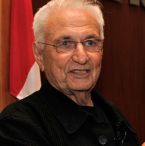Animal Rights Activists Deface King Charles III Portrait, Provoking Controversy Over Welfare Standards
London's art scene witnessed a dramatic incident as two animal rights activists vandalized Jonathan Yeo's portrait of King Charles III with stickers featuring characters from the animated film series Wallace and Gromit. The controversial portrait, currently on display at the Philip Mould Gallery, became the target of the protest, sparking debates over animal welfare standards in the United Kingdom.
The activists, belonging to the Animal Rights group, took to social media to share a video of vandalism, which showed them using rollers to plaster a picture of Wallace over the monarch's face. Accompanying the stickers was a speech bubble stating, "No cheese, Gromit. Look at all this cruelty on RSPCA farms!"
Call for Action
The vandalism was accompanied by a call to action from Animal Rights, urging King Charles III, the patron of the Royal Society for the Prevention of Cruelty to Animals (RSPCA), to reconsider the organization's Assured Scheme. This program, aimed at raising welfare standards for farm animals across the UK, has come under scrutiny from animal rights activists over the criteria used to assess farm operations.
Intensifying Scrutiny
Before the incident, Animal Rights published an investigation highlighting concerns about welfare on RSPCA Assured farms, describing the operations of 45 farms as "indefensible." This scrutiny has intensified calls for transparency and accountability within the Assured Scheme.
Regarding the vandalism, the RSPCA claimed that while complaints regarding welfare on certified farms cannot be dismissed, criminal actions are not acceptable. The organization's dedication to enhancing the welfare of farmed animals was reaffirmed through the implementation of the Assured Scheme, although the organization agreed that more shame and investigation are required.
Portrait Unharmed
According to the gallery owner, Philip Mould, no harm was done to the painting, as evident from the portrait, which was covered with stickers. Nonetheless, the portrait can still be seen at the gallery and continues to spark more debates regarding its purpose as an art and activism piece for promoting animal rights.
In conclusion, the act of vandalism on the portrait by Jonathan Yeo depicting King Charles III illustrates how the society, esp. animal activists, have considered it appropriate to express their dissatisfaction with whatever they feel is a violation of standards rather than to take legal actions. Although the particular event may be controversial, it has often focused attention on these essential issues, such as transparency and accountability within various organizations, including the RSPCA, and has initiated debates on their reforms. Furthermore, the event under discussion also raises an important question about art's roles in actively motivating solutions and change and, thus, about the connection between art and social activism. In the following stages, it shall be paramount that stakeholders come to reasoned discourse and embrace scrupulous endeavors that will see them achieve changes of redeeming value where matters of animal use and treatment in digital societies are concerned.














